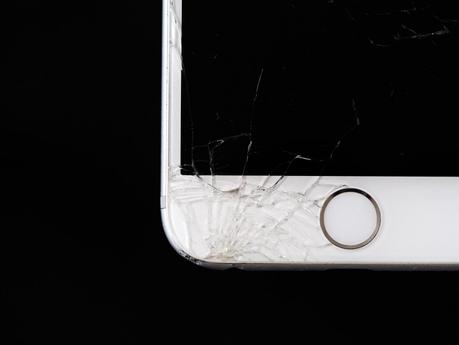We’ve all been there. You buy that beautiful new phone or tablet, with all the latest technology that cost you a small fortune, meaning you’re living off tinned spaghetti for the next few months. And then you go and drop it on the floor, leaving you with a horrific smashed screen. Not only is this a very costly mistake, but for a lot of us, it can actually put us off buying an expensive new gadget entirely.
But what if self-healing phones were in our future?
Self-healing is something we tend to take for granted, after all, our bodies do it every day. If you run into your roommate’s grumpy cat and end up with a big scratch across your arm, it’s not the end of the world, as your skin will simply heal away as if it never existed over the next few days. Wouldn’t it be amazing if the screens on our phones could do the same?
Now, before you dismiss the idea as impossible, just think – how much of the technology we use every day would have been thought to be impossible just a decade or two ago? Most of it! Even the internet, something that the vast majority of us would be lost without, is a relatively new innovation.
Then there’s the fact that Samsung filed a patent for a self-healing oleophobic screen just a few months ago, raising speculation that the next big Samsung release – the S10 in early 2019 – might be able to fix small scratches on its screens.
Of course, it would be easy to run away with ideas here, when there is no actual news of what this screen does. What we do know, though, is that Samsung are working on a screen that resists fingerprint marks that tend to clog up our screen with smears that constantly need cleaning. The oleophobic part of the screen basically means that it should be oil-repellent, meaning that dust, water and oil (such as the oils in our fingerprints) would not attach to our screen, leaving it looking pristine.
What is peaking people’s interests about this oleophobic screen though, is the fact that it mentions self-healing too. Now, it would be daft to presume that we currently have the technology to have a screen that would regenerate itself completely after you managed to smash it, but it could be possible that there’s a screen that could fix very small scratches such as the kind you get from keeping your phone in the same pocket as your keys. Which is still a win, as we’d all like a more damage-resistant phone in our lives.
Yet, the question still remains, could an entirely self-healing phone be achievable in future?

Researchers at the University of Japan have published a paper in Science outlining a new type of glass that may be able to self-heal itself from cracks. Made from a polymer named “polyether-thioureas” the material allows cracks to be fixed by simply pressing it back together by hand – without the need for a high temperature to melt and reset the screen. In fact, the researchers found that the edges could adhere to each other when held for 30 seconds at just room temperature and would regain its original strength after just a few hours. The researchers believe that this polymer could be used in smartphones in the future as well as other fragile objects would are made from glass.
But it also brings a question to light – do phone manufacturers really want self-healing technology? Phone giants like Apple and Samsung bring out new smartphone models every year with new gadgets and specs that make us want to indulge in a better model. Yet, do we always buy a new phone to get the latest technology, or do we also buy a new phone due to our older models being smashed?
True, screens can be fixed, but this can be costly and many of us don’t take out dedicated insurance to protect our phones, so often it can be easier to trade a smashed phone in and take a loss over a new model. A self-healing phone would take away this sales drive.
Kind of like when we all owned a Nokia 3210, those robust phones would last us for years, with only advancements like phone cameras and music on phones really tearing us away from our faithful Nokia. This will mean that if crack-proof phones exist, there will need to be enough technological carrots to tempt people into new phones.
It’s highly likely that there are numerous people working on a self-healing screen right at this moment with every phone company racing to be the first to unveil a self-healing phone, but that doesn’t mean the technology is anywhere near being ready. Be prepared that we might need to wait a decade or so for our screens to be smash-resistant, but until then it looks like our phones are at least becoming a little more resilient.

